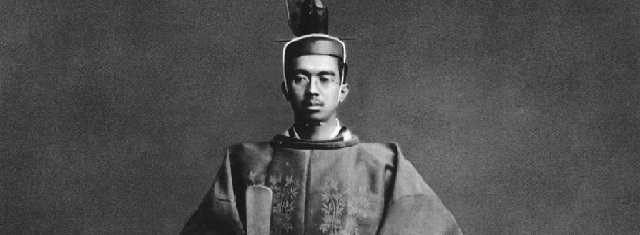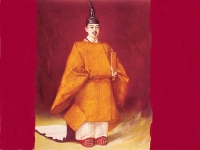Politics
EMPEROR HIROHITO WAS A LIVING GOD AND BECAME CONSTITUTIONAL SYMBOL
HIS LIFE on 70th ANNIVERSARY END OF WAR

Emperor HIROHITO called Emperor SHOWA (Source: Jardin Bio)
After WW II, Emperor SHOWA was transformed into the Constitutional symbol of a new, more democratic JAPAN.
In the late years, especially to younger generations with no experience of war, he became an eccentric old man enjoying himself and waving to the crowds at the New year's celebrations. He was Emperor of JAPAN from 1926 until his death in 1989. During WW II (1939-1945), JAPAN attacked nearly all of its Asian neighbors, allied itself with Nazi GERMANY and launched a surprise assault on the US naval base of Pearl Harbour. Though, HIROHITO later portrayed himself as a powerless constitutional monarch, many scholars have come to believe he played an active part in the war effort.
In the late years, especially to younger generations with no experience of war, he became an eccentric old man enjoying himself and waving to the crowds at the New year's celebrations. He was Emperor of JAPAN from 1926 until his death in 1989. During WW II (1939-1945), JAPAN attacked nearly all of its Asian neighbors, allied itself with Nazi GERMANY and launched a surprise assault on the US naval base of Pearl Harbour. Though, HIROHITO later portrayed himself as a powerless constitutional monarch, many scholars have come to believe he played an active part in the war effort.
After, JAPAN surrendered in 1945, he became a figurehead with no political power.
Before end of war, HIROHITO was as Emperor the Nation's highest spiritual authority and commander-in-chief of the armed forces. A post-war Constitution preserved the monarchy but defined the Emperor as a mere symbol of the State. All political power went to elected representatives. The American occupation ended in 1952. He died on January 7, 1989, having spent nearly 64 years on the throne.
Before end of war, HIROHITO was as Emperor the Nation's highest spiritual authority and commander-in-chief of the armed forces. A post-war Constitution preserved the monarchy but defined the Emperor as a mere symbol of the State. All political power went to elected representatives. The American occupation ended in 1952. He died on January 7, 1989, having spent nearly 64 years on the throne.
Masato HARADA released his remake film « The Emperor in August », almost a week before the 70th anniversary of the end of the war, presenting a different image of the Emperor, based on the writings of historian Kazutoshi HANDO and HARAD's own research. In the end of war, in August 1945, the Emperor played a key part in bringing this war to an end. At a multiplex in Tokyo, HARADA scheduled his new version to open on August 8.
Kihachi OKAMOTO made a film with the same Japanese title in 1967, released internationally as « Japan's longest day » that was also based on a book written by HANDO (but published under the name of well-known social critic and journalist Soichi OYA as « editor »). HARADA said that OKAMOTO's film was not faithful to the book. Referring to Japan's six supreme civilian and military leaders in 1945, he said wanting to go more deeply into the characters, staying faithful to the book.
Another reason for a remaking, was that new research had been published since the 67's film, including a book by HANDO titled « Imperial decision : the Emperor and Kantaro SUZUKI ») that focuses on Emperor SHOWA's decision to accept the surrender conditions laid down by the Potsdam Declaration of July 26, 1945. What finally motivated HARADA to remake « Japan's longest day » was « The Sun », Aleksandor SOKUROV's 2006 drama about Emperor HIROHITO in the concluding days of the war. It was the first time for Japanese to see the Emperor as a leading part. HARADA found that it was not fair and exagerated on the Emperor having mannerisms. He believes that the aim was to make him look ridiculous. (reported in Japan Times)
Ruby Bird Emperor Hirohito Showa God Japan Usa Nazi Germany Ww 2 Aniversary Leader Potsdam Declaration Nuclear Bomb Hiroshima Nagazaki
Liability for this article lies with the author, who also holds the copyright. Editorial content from USPA may be quoted on other websites as long as the quote comprises no more than 5% of the entire text, is marked as such and the source is named (via hyperlink).






